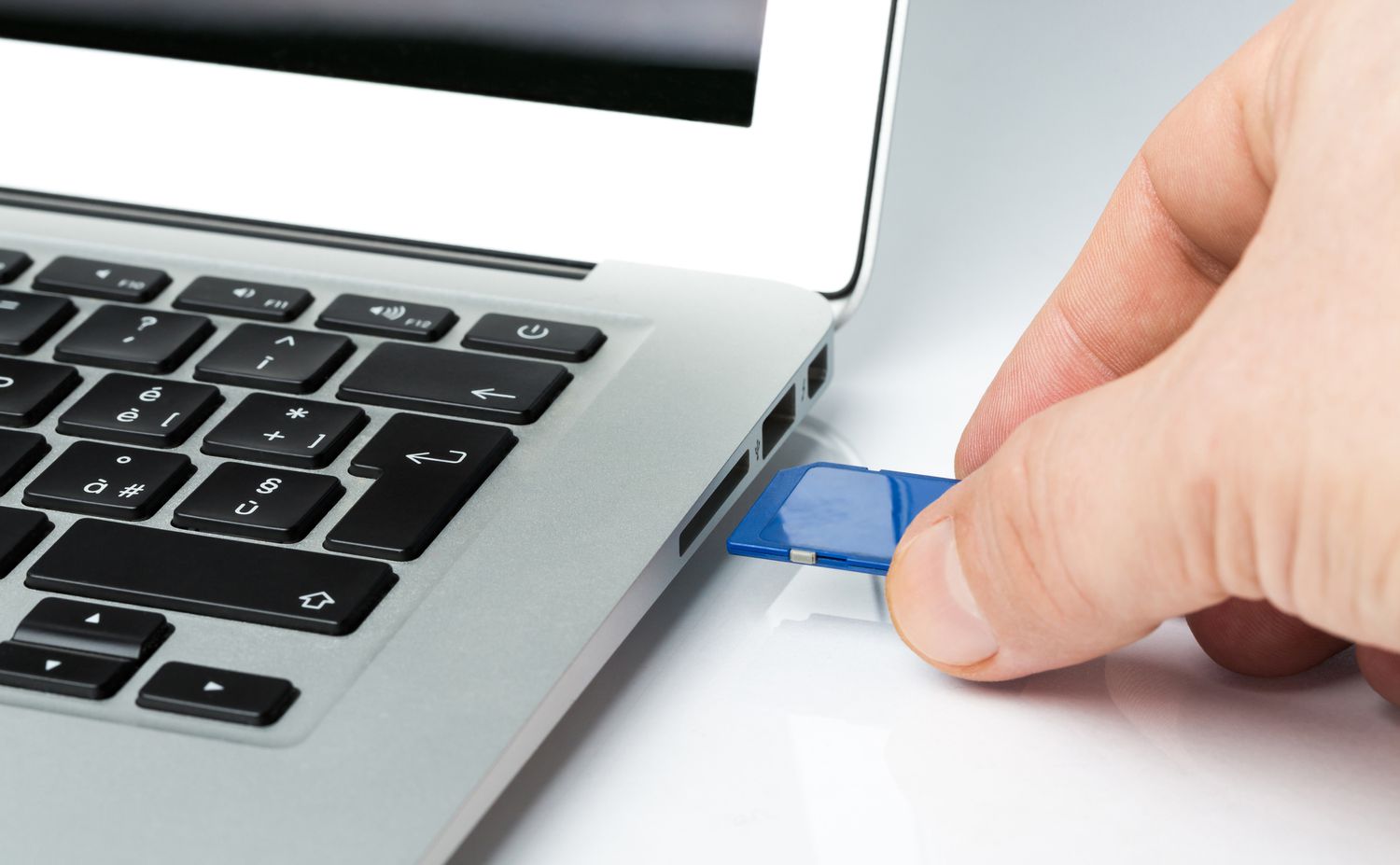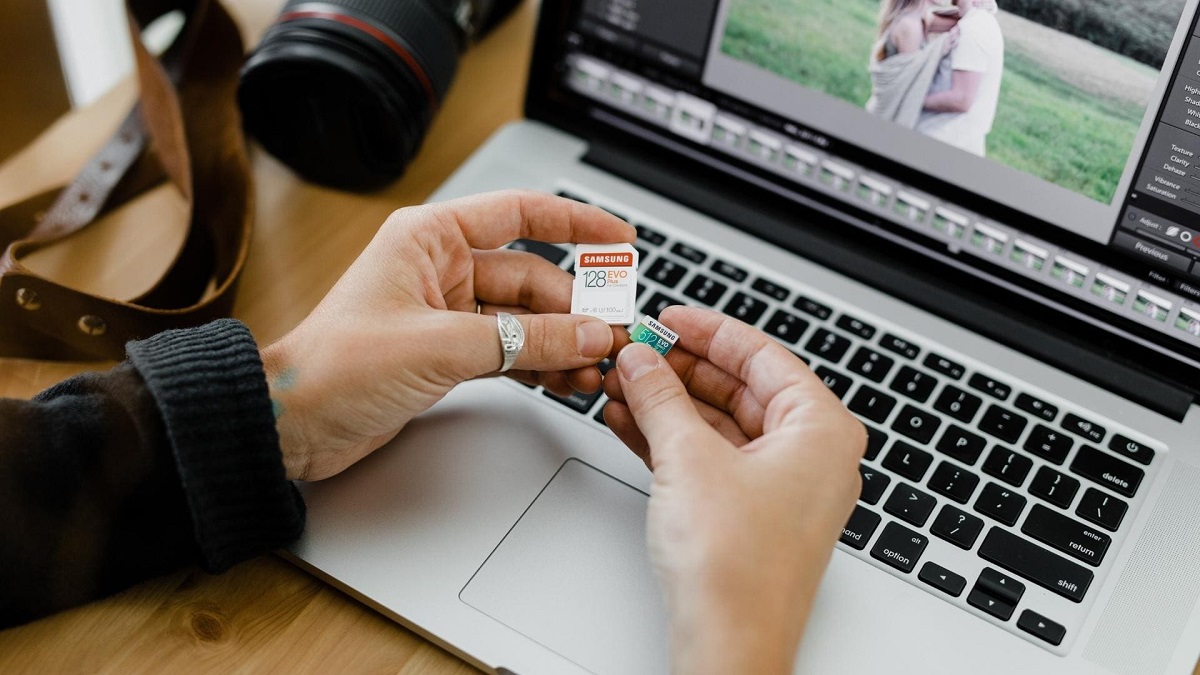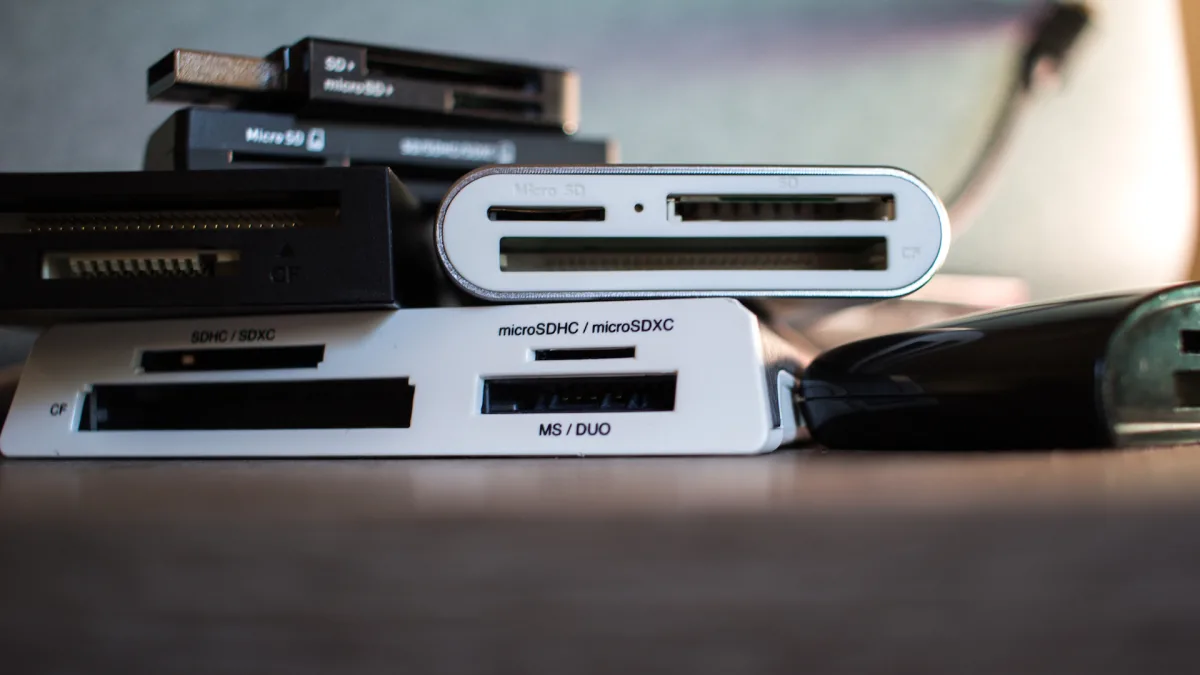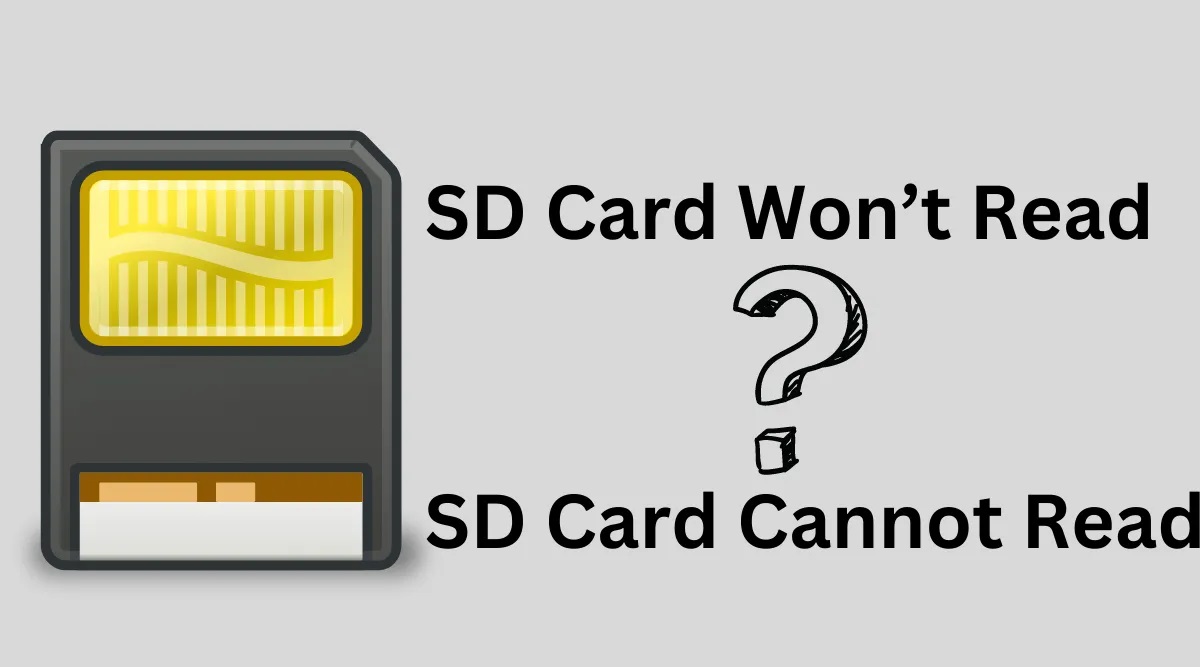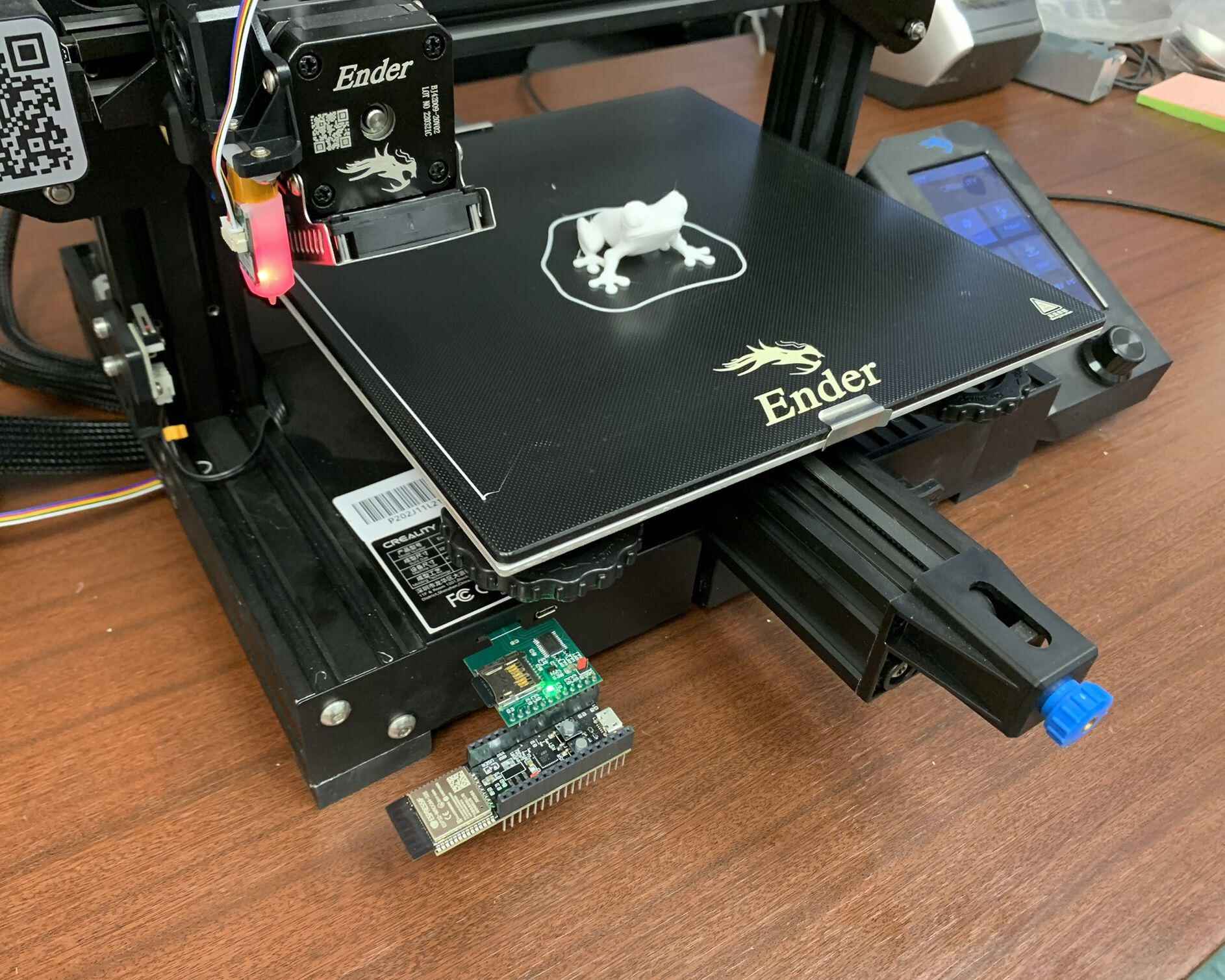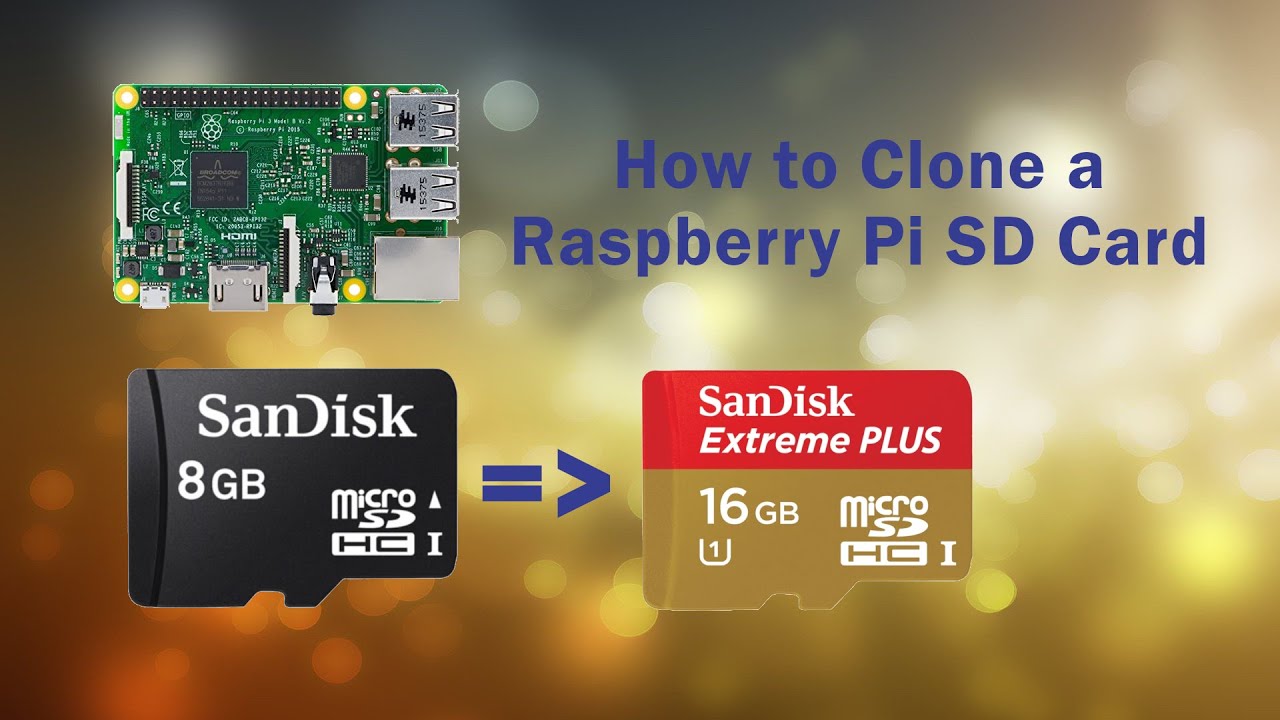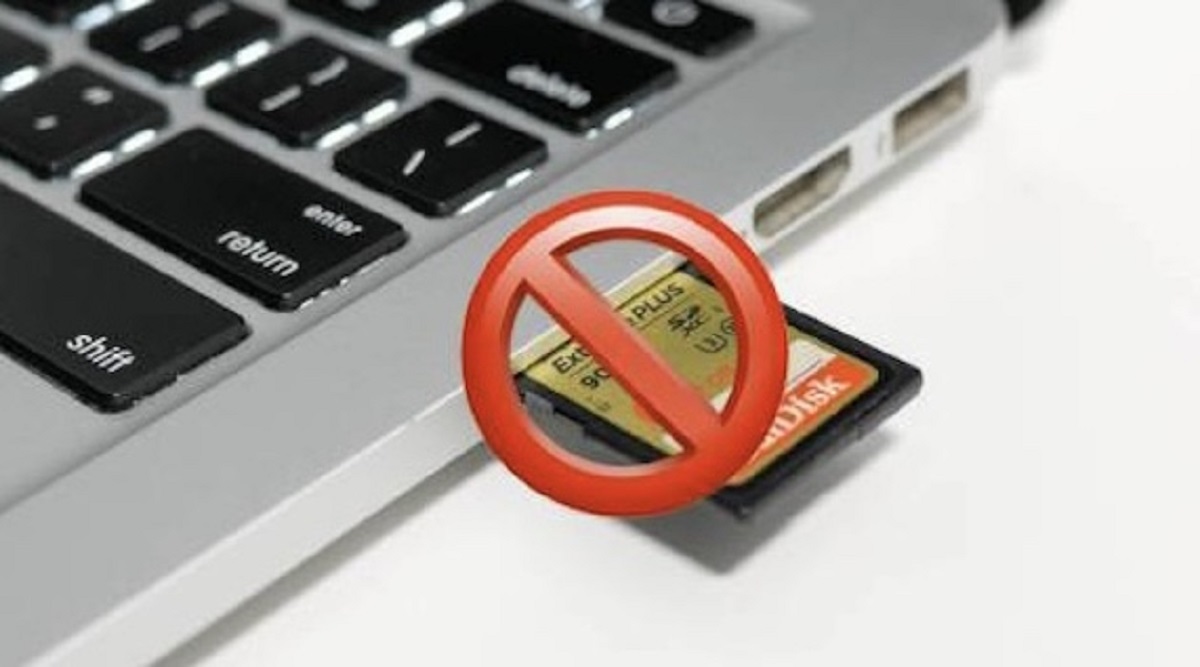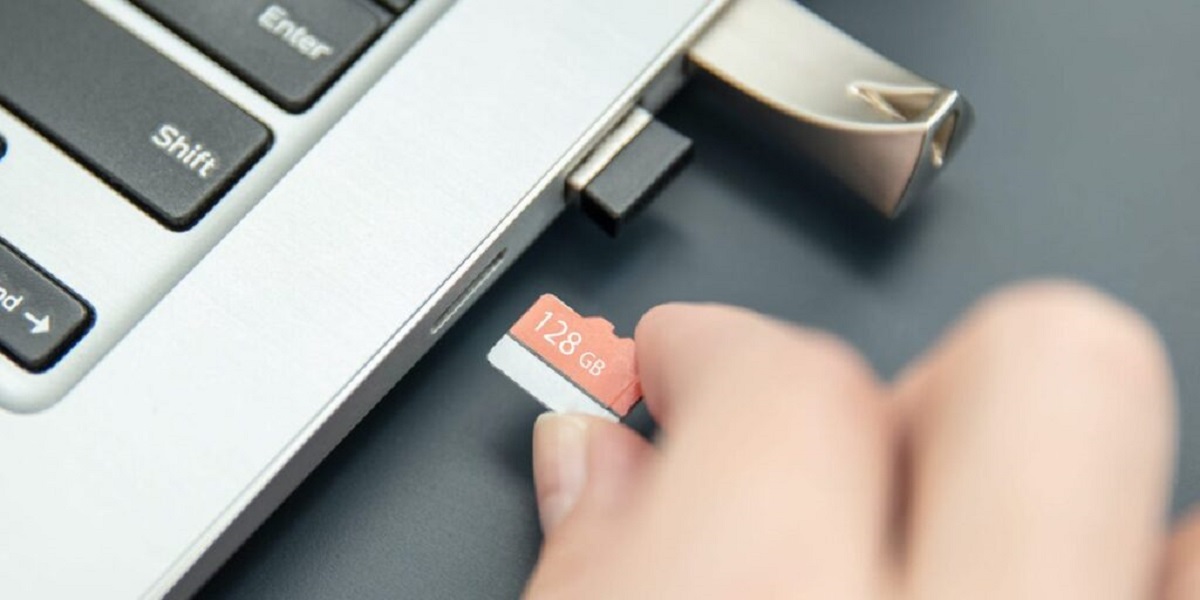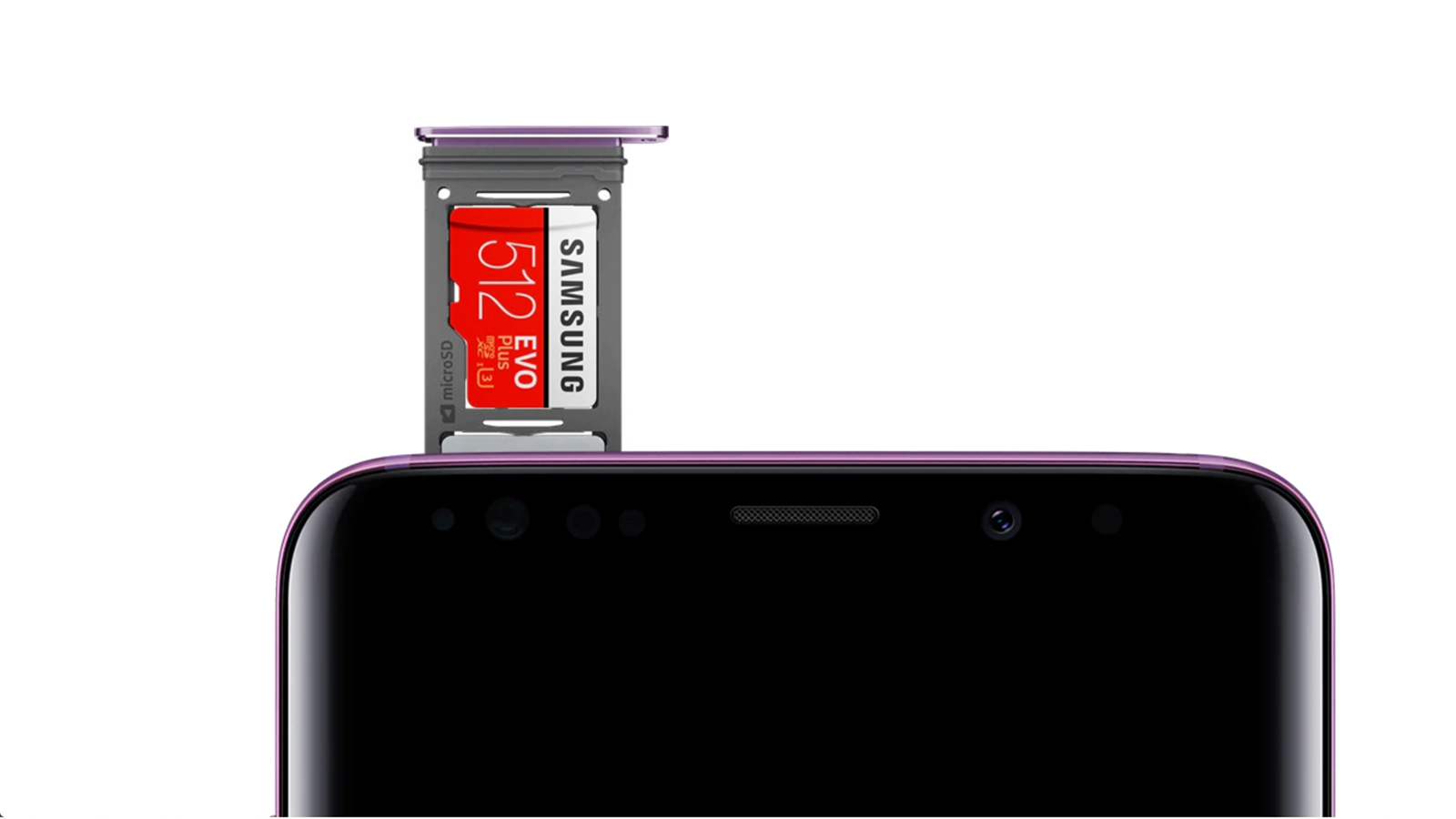Introduction
In today’s digital age, where data storage and transfer are essential, SD cards have become a popular solution for many devices. Whether you’re using a camera, a smartphone, a tablet, or even a gaming console, chances are you’ve encountered the need for an SD card at some point. But how exactly do you use an SD card? In this guide, we will walk you through all the necessary steps to effectively utilize an SD card.
SD cards, also known as Secure Digital cards, are small, portable storage devices used to store and transfer digital data. They come in varying capacities, ranging from a few gigabytes to several terabytes, to suit different storage needs. SD cards are widely compatible and can be used in various devices, including digital cameras, smartphones, tablets, laptops, and more.
In this guide, we will cover the basics of using an SD card, including understanding how an SD card works, choosing the right one for your needs, inserting and removing it from your devices, formatting it, transferring files to and from it, troubleshooting common issues, and best practices for optimal usage.
Whether you’re a novice or an experienced user, this guide has got you covered. By following the instructions provided here, you’ll be able to make the most out of your SD card, ensuring seamless data storage, retrieval, and transfer. So, let’s dive in and explore the world of SD cards to unlock their full potential!
Understanding an SD Card
Before diving into how to use an SD card, it’s important to have a basic understanding of what an SD card is and how it works. As mentioned earlier, SD stands for Secure Digital, and it refers to the type of card used for storing and transferring digital data.
An SD card consists of a small plastic casing that houses a memory chip. This memory chip stores your data, whether it’s photos, videos, music, or any other type of digital file. The capacity of an SD card determines how much data it can hold. SD cards come in different capacities, such as 8GB, 16GB, 32GB, 64GB, and even larger options like 128GB and 256GB.
The memory chip inside an SD card uses non-volatile memory to store data. Non-volatile memory means that the data remains stored even when power is removed, making it a reliable storage solution. Additionally, SD cards are typically resistant to physical damage, such as shocks and vibrations, ensuring the safety of your precious data.
SD cards use a standardized format and file system for storing and organizing data. The most common file system used is FAT32, which is compatible with various devices and operating systems. However, newer SD cards may use the exFAT or NTFS file systems, which offer improved compatibility and support for larger file sizes.
It’s important to note that SD cards also come in different classes and speeds. The class of an SD card determines its minimum sustained write speed. The higher the class number, the faster the card can write data. Additionally, some SD cards have UHS (Ultra High-Speed) ratings that indicate even faster data transfer speeds.
Understanding the basics of an SD card and its components will help you make informed decisions when choosing the right card for your needs. Now that you have a grasp of what an SD card is and how it works, let’s move on to the next section, where we will explore how to choose the right SD card for your device.
Choosing the Right SD Card
When it comes to choosing the right SD card, there are a few factors to consider to ensure compatibility and optimal performance for your device. Here are the key factors to keep in mind:
- Capacity: Determine how much storage space you require. Consider the type and volume of data you’ll be storing. If you primarily take high-resolution photos or record videos, you may need a higher capacity SD card.
- Speed: The speed of an SD card is crucial, especially if you frequently write or transfer large files. Look for SD cards with higher Class ratings or UHS Speed Class ratings for faster data transfer.
- Device Compatibility: Make sure to check your device’s manual or specifications to ensure that the SD card you choose is compatible. Verify which types of SD cards your device can support, such as SDHC or SDXC.
- Usage Intensity: Consider how often you’ll be using the SD card and under what conditions. If you’ll be frequently swapping the card between devices or using it in harsh environments, opt for a rugged and durable SD card.
- Brand and Quality: Stick to reputable brands when purchasing an SD card. Trusted brands often offer better performance, reliability, and support. Avoid purchasing from unknown or unreliable sources to ensure you receive an authentic product.
It’s important to note that not all devices are compatible with every type of SD card. Some older devices may only support SDHC cards, while newer devices may be capable of utilizing the higher-capacity SDXC cards. Using an incompatible SD card can result in errors, performance issues, or even damage to the card or device.
Additionally, if you’re using an SD card for a specific purpose like recording high-definition videos or capturing fast-action photos, it’s essential to choose an SD card with a high write speed for a smooth and uninterrupted experience.
By considering the factors mentioned above, you can choose an SD card that matches your storage needs, device compatibility, and usage requirements. In the next section, we will cover the proper way to insert and remove an SD card from your device.
Inserting and Removing an SD Card
Inserting and removing an SD card from your device is a simple process, but it’s important to follow the correct steps to avoid any damage to the card or the device. Here is a step-by-step guide on how to insert and remove an SD card properly:
- Inserting an SD Card:
1. Locate the SD card slot on your device. It is typically found on the side or bottom of the device, depending on the make and model.
2. Ensure that your device is turned off before inserting the SD card. This precaution helps prevent any potential data corruption or damage to the card.
3. Take the SD card and gently insert it into the designated slot. Ensure that you align the card correctly with the slot – the metal contacts on the card should face the contacts inside the slot.
4. Apply gentle pressure to push the card into the slot until it clicks into place. This indicates that the card is securely inserted.
5. Once the SD card is inserted, you can turn on your device. It will automatically recognize the card and make it available for use.
- Removing an SD Card:
1. Before removing the SD card, ensure that your device is turned off. This step is crucial to prevent any data loss or damage to the card.
2. Locate the SD card slot and gently push the card inward. The card will spring out slightly, allowing you to grasp it with your fingers.
3. Carefully pull the SD card out of the slot, applying even pressure. Avoid using excessive force or bending the card, as this can result in damage.
4. Once the SD card is removed, you can safely store it in a protective case or insert it into another compatible device.
Remember to handle the SD card with care, avoiding touching the metal contacts or exposing it to extreme temperatures, moisture, or magnetic fields. Treating your SD card properly will ensure its longevity and optimal performance.
Now that you know how to insert and remove an SD card correctly, let’s move on to the next section, where we will discuss formatting an SD card.
Formatting an SD Card
Formatting an SD card is the process of preparing it for use by setting up the file system and deleting any existing data. It is recommended to format a new SD card or when you encounter issues with the card. Here’s a step-by-step guide on how to format an SD card:
- Backup Your Data:
- Formatting on Windows:
Before formatting the SD card, it’s important to back up any important data stored on it. Formatting will erase all the files and folders on the card, so make sure to transfer them to a secure location on your computer or another storage device.
1. Connect your SD card to your computer using an SD card reader or the built-in card slot.
2. Open “File Explorer” or “My Computer” and locate the SD card. It should appear as a removable storage device.
3. Right-click on the SD card and select “Format” from the drop-down menu. This will open the formatting options.
4. In the formatting options window, select the desired file system (usually FAT32) and allocation unit size. You can also give the SD card a new volume label if desired.
5. Ensure that the “Quick Format” option is checked to speed up the formatting process. However, if you’re experiencing issues with the SD card, uncheck this option for a more thorough format.
6. Double-check that all the formatting settings are correct, and then click on the “Start” button to begin the formatting process.
- Formatting on Mac:
1. Connect your SD card to your Mac using an SD card reader or adapter.
2. Open “Disk Utility” by searching for it in “Spotlight” or through the “Applications” folder.
3. In the “Disk Utility” window, locate and select the SD card from the list of available drives on the left-hand side.
4. Click on the “Erase” tab and choose the desired format (typically exFAT or FAT32) and name for the SD card.
5. Double-check the formatting settings, and then click on the “Erase” button to start the formatting process.
Formatting may take a few moments to complete, depending on the capacity of the SD card and the formatting options chosen. Once the formatting process is done, the SD card will be ready for use, with a clean file system and empty storage space.
It’s important to note that formatting an SD card will erase all data, so ensure that you have backed up anything important before proceeding. Formatting can also help resolve potential issues like corruption or compatibility problems, but if the issues persist, further troubleshooting may be necessary.
Now that you’re familiar with formatting an SD card, let’s move on to the next section, where we will discuss transferring files to and from an SD card.
Transferring Files to and from an SD Card
Transferring files to and from an SD card is a straightforward process that allows you to manage and backup your data. Whether you want to transfer photos, videos, music, or documents, here are the steps to follow:
- Transferring Files from Your Device to an SD Card:
1. Insert the SD card into your device’s SD card slot, ensuring it is properly seated.
2. On your device, locate the files you want to transfer. This may include photos in your gallery, music in your music library, or documents in your file manager.
3. Select the files or folders you wish to transfer. You can do this by long-pressing on a file to select it, or by using multi-select options provided by your device’s operating system.
4. Once the files are selected, tap on the “Share” or “Move” option. This will open a menu of available destinations for the files.
5. Choose the SD card as the destination for the files. This may appear as an option labeled “SD card,” “External storage,” or the specific name of your SD card, depending on your device and operating system.
6. Confirm the transfer by tapping on the “Move” or “OK” button. The files will then be transferred to the SD card, freeing up space on your device’s internal storage.
- Transferring Files from an SD Card to Your Device:
1. Insert the SD card into your device’s SD card slot if it isn’t already inserted.
2. On your device, open a file manager or gallery app to browse the contents of the SD card.
3. Navigate to the files or folders you wish to transfer to your device.
4. Select the files you wish to transfer. Use the built-in selection options, such as long-pressing on a file or using multi-select functionality.
5. Once the files are selected, tap on the “Share” or “Move” option. This will open a menu of available destinations for the files.
6. Choose the desired location on your device as the destination for the files. This could be a specific folder or internal storage location.
7. Confirm the transfer by tapping on the “Move” or “OK” button. The files will then be transferred from the SD card to your device’s internal storage.
By following these steps, you can easily transfer files to and from an SD card, allowing you to manage and organize your data effectively. Remember to safely eject the SD card from your device before removing it to avoid any data corruption.
In the next section, we will discuss common troubleshooting tips for resolving issues that you may encounter with an SD card.
Troubleshooting Common SD Card Issues
While SD cards are generally reliable, there may be instances where you encounter issues. Here are some common problems you may face with an SD card and some troubleshooting steps to resolve them:
- SD Card Not Detected:
If your device does not recognize the SD card, try the following troubleshooting steps:
– Ensure that the SD card is properly inserted into the card slot.
– Clean the metal contacts of the SD card with a soft cloth or cotton swab. Make sure there is no dirt or debris obstructing the connection.
– Restart your device and check if the SD card is detected.
- Read/Write Errors:
If you encounter read or write errors on your SD card, follow these steps:
– Backup any important data on the SD card to avoid potential data loss.
– Format the SD card using your device or a computer. This can help resolve any file system errors that may be causing the issue.
– If the problem persists, try using the SD card in a different device or using a different SD card reader to determine if the issue is specific to the card or the device.
- SD Card Write Protected:
If you are unable to write or delete files on your SD card due to write protection, try the following:
– Check for a physical write protect switch on the side of the SD card. Ensure it is in the unlocked position.
– If the write protect switch is not present or does not resolve the issue, connect the SD card to a computer and use disk management tools to disable write protection.
- Corrupted SD Card:
If your SD card becomes corrupted and files are inaccessible, consider the following steps:
– Use data recovery software to recover any important files from the corrupted SD card before attempting any further troubleshooting.
– Format the SD card using your device or a computer to try and repair any file system errors.
– If formatting does not work or if the card continues to be corrupted, it may be necessary to replace the SD card.
If these troubleshooting steps do not resolve the issue, it’s recommended to seek professional assistance or contact the manufacturer for further support. Remember to handle your SD card with care, avoid extreme temperatures and physical damage, and always backup your data to minimize the impact of any issues that may arise.
In the next section, we will discuss best practices for using an SD card to help ensure its longevity and optimal performance.
Best Practices for Using an SD Card
To maximize the lifespan and performance of your SD card, it’s important to follow some best practices. By following these guidelines, you can ensure the longevity and optimal usage of your SD card:
- Handle with care:
Treat your SD card with care. Avoid touching the metal contacts, as oils and dirt can interfere with its functionality. Always insert and remove the SD card gently, without applying excessive force or bending it.
- Avoid extreme conditions:
Keep your SD card away from extreme temperatures, both hot and cold. Exposure to such conditions can damage the card and potentially lead to data loss. Additionally, avoid exposing the card to excessive moisture or direct sunlight.
- Keep backups:
Regularly back up the data on your SD card to prevent loss in case of accidental deletion, corruption, or physical damage. This can be done by copying the files to a computer, cloud storage, or another storage device.
- Format periodically:
Occasionally format your SD card to maintain optimal performance. Formatting helps to clean up the file system and remove any potential errors or corrupted data. Just make sure to back up your data beforehand, as formatting erases all files on the card.
- Safely eject the card:
Before removing the SD card from your device, always eject it safely. This ensures that all write operations are completed, avoiding data loss or corruption. Use the “Eject” or “Unmount” option provided by your device’s operating system before physically removing the card.
- Use reputable brands:
Opt for SD cards from trusted and reputable brands. These brands often offer better quality, reliability, and support. Avoid purchasing counterfeit or low-quality cards from unknown sources to minimize the risk of performance issues or data loss.
- Regularly update firmware:
Check for firmware updates for your device, especially cameras or other SD card-compatible devices. Firmware updates may improve compatibility, performance, and functionality when using SD cards.
By adhering to these best practices, you can ensure that your SD card remains in optimal condition, providing reliable storage and efficient performance for your data. Remember to always follow the guidelines specified in your device’s manual and consult the manufacturer’s recommendations when using an SD card with specific devices.
Now that you are familiar with the best practices for using an SD card, you are ready to optimize your experience with this versatile storage solution.
Conclusion
In this comprehensive guide, we have covered everything you need to know about using an SD card effectively. We started by understanding the basics of an SD card, including its purpose, components, and compatibility. We then discussed the importance of choosing the right SD card based on capacity, speed, device compatibility, usage intensity, and brand quality.
We explored the proper way to insert and remove an SD card from your device, highlighting the significance of handling the card with care and ensuring its secure seating. Additionally, we provided step-by-step instructions on how to format an SD card, allowing you to prepare it for use and resolve potential file system errors.
Transferring files to and from an SD card was also addressed, emphasizing the importance of backing up data, selecting and moving files, and the relevance of using a reliable SD card reader or adapter.
To aid you in troubleshooting common SD card issues, we presented several solutions for problems such as SD card detection, read/write errors, write protection, and card corruption. It’s important to remember that seeking professional assistance or contacting the manufacturer is always an option if issues persist.
Lastly, we shared best practices for using an SD card, including handling it with care, avoiding extreme conditions, keeping backups, periodic formatting, safely ejecting the card, using reputable brands, and regularly updating firmware. Adhering to these practices will help you maintain the longevity and optimal performance of your SD card.
With this knowledge and the implementation of these guidelines, you can take full advantage of your SD card’s storage capacity, allowing you to store, transfer, and access your digital files with ease.
We hope this guide has been informative and valuable in assisting you with using an SD card. Now it’s time to put your knowledge into action and make the most out of your SD card experience!







